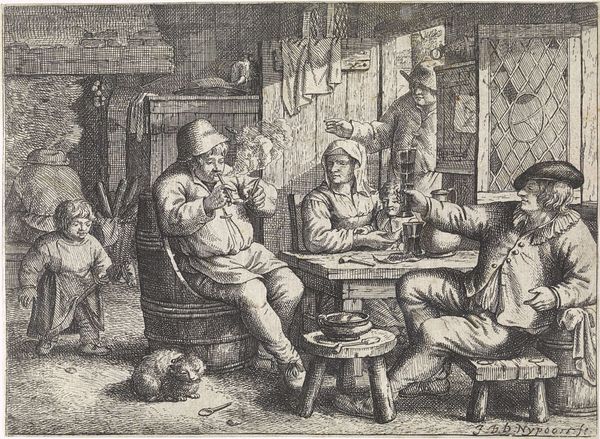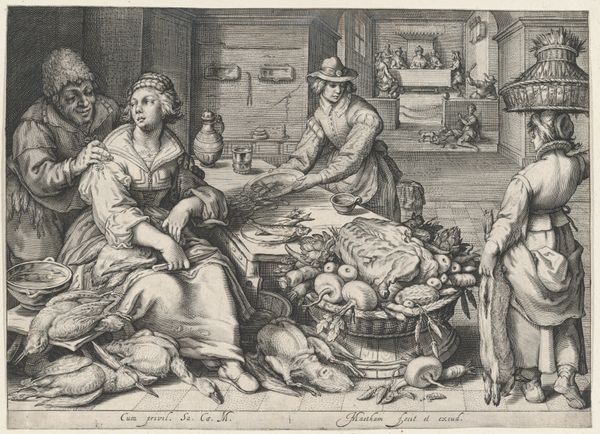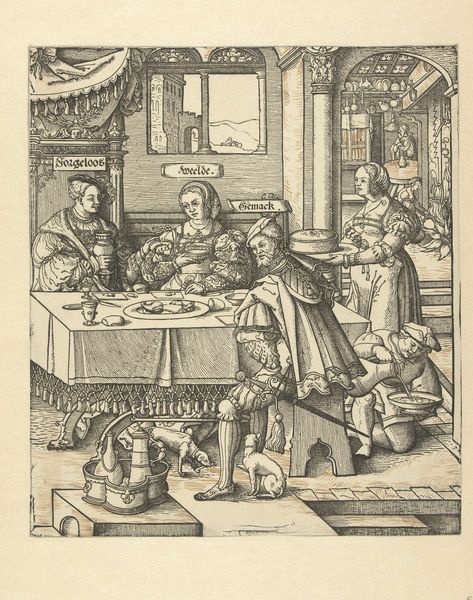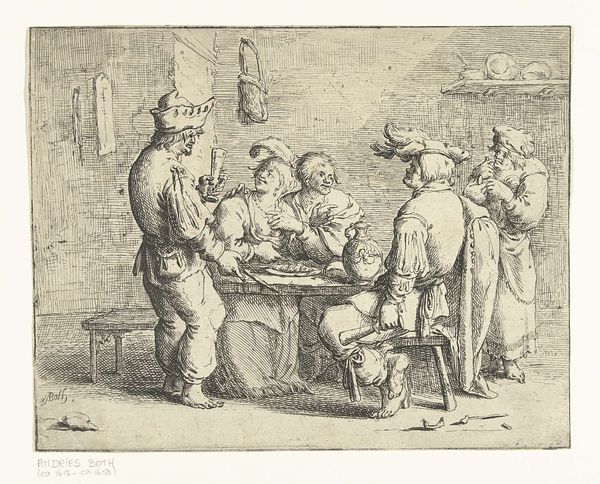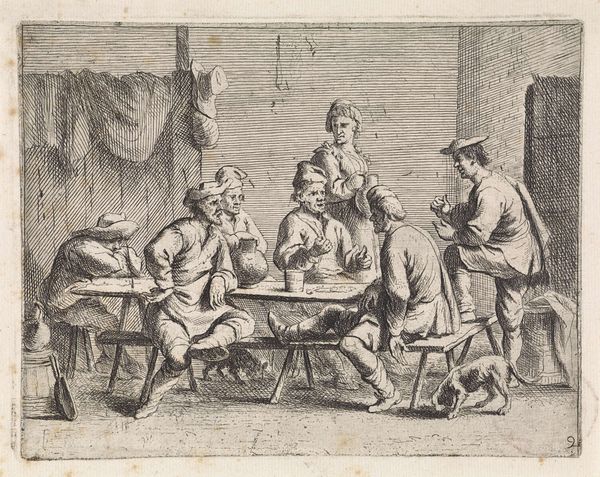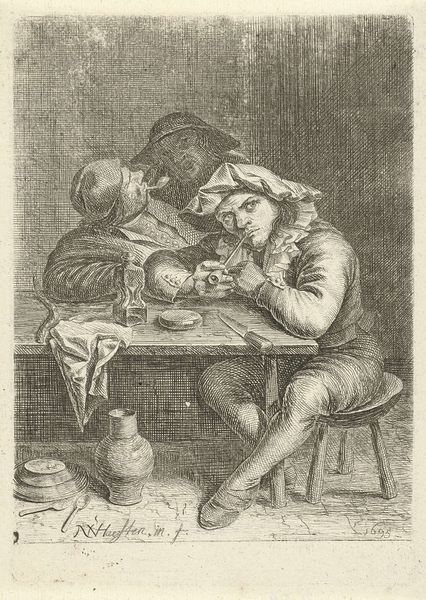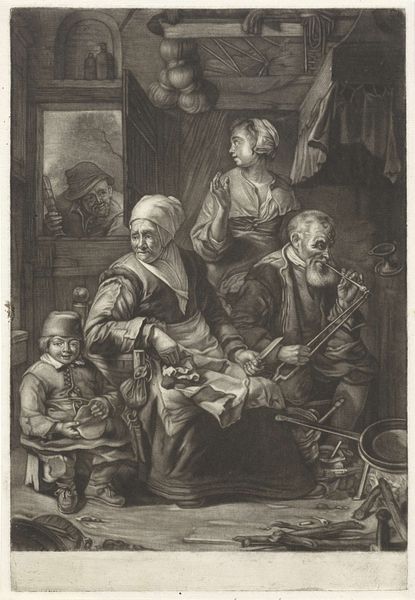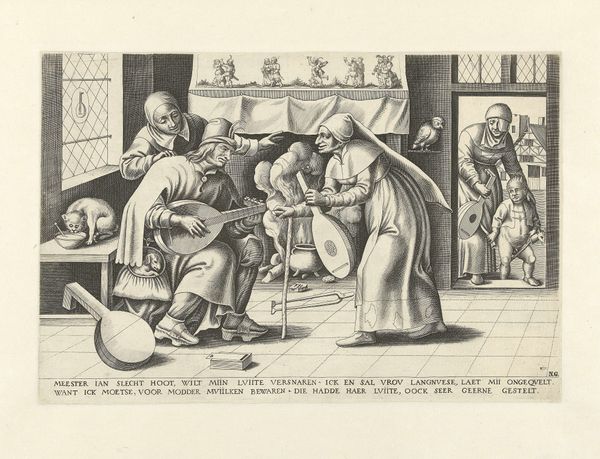
print, engraving
#
narrative-art
#
baroque
#
dutch-golden-age
# print
#
figuration
#
genre-painting
#
engraving
#
realism
Dimensions: height 237 mm, width 332 mm
Copyright: Rijks Museum: Open Domain
Curator: Let's turn our attention to Jacob Matham's engraving, "Keukenstuk met kip aan het spit," dating from 1603, currently held in the Rijksmuseum. What's your initial reaction? Editor: Crowded, yet strangely inviting. The monochrome palette and meticulously etched details create an almost overwhelming sensory experience of a 17th-century kitchen. There's a strong textural presence despite it being a print. Curator: Indeed. The composition, particularly the convergence of lines drawing our eye to the spit-roasted chicken, functions as a structural anchor, no? Consider how the textures are conveyed: the softness of the fowl against the coarse weave of the clothing. Editor: Structurally sound, undeniably. But contextually, Matham offers a peek into the domestic lives of the Dutch Golden Age. It’s fascinating how even mundane scenes like this are charged with socio-economic implications. The relative opulence suggests a degree of prosperity not accessible to all. Curator: Notice how the engraving technique itself – the fineness of line and controlled gradations of tone – create the illusion of depth and volume. The tonal range is remarkable for the era. How does that play into its social interpretation, do you think? Editor: It allows Matham to showcase the details, highlighting class distinctions through material possessions and perhaps, social roles within the kitchen itself. Look at the individuals at the window; they appear to be looking in at a feast to which they’re not invited. Curator: An interesting read. Yet the way Matham utilizes chiaroscuro generates its own symbolic weight; shadow isn’t just the absence of light here but a potent, emotive tool defining contours while simultaneously obscuring detail. It contributes directly to the artwork’s depth, visually and conceptually. Editor: And think about where this print would be displayed. Perhaps in another well-to-do home, reminding viewers of their status but also subtly reinforcing the accepted social order. These images, presented publicly, shaped perceptions. Curator: You raise valid considerations regarding audience and reception. Considering Matham’s skill, how the meticulous detail renders this seemingly simple kitchen scene so alluring speaks to a powerful understanding of visual language and perspective, don’t you agree? Editor: Absolutely. Seeing the print offers a window onto the intricate social fabrics of its time; however Matham’s artistic skill presents them elevates what could be plain imagery into thoughtful social observation. Curator: A fascinating convergence of form and history. Thank you. Editor: My pleasure.
Comments
No comments
Be the first to comment and join the conversation on the ultimate creative platform.
